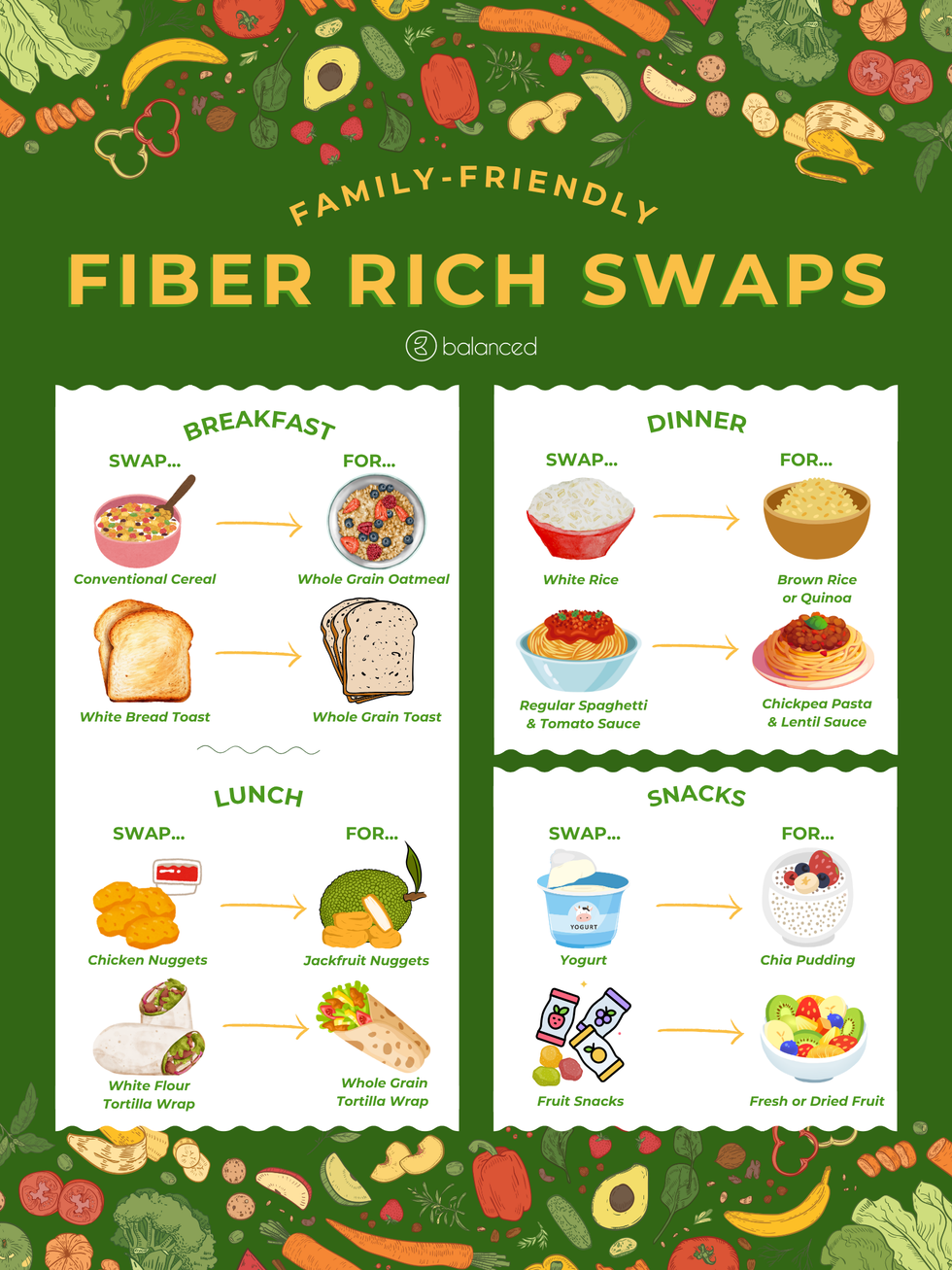Fiber on a Budget: Affordable, Fiber Rich Foods for All Families & Kids
- Stephanie Ng
- Jul 9
- 3 min read
Updated: Jul 28
Fiber is one of the most overlooked nutrients in the American diet. Over 90% of Americans consume only 10-15 grams per day, far below the recommended 25-30 grams. Adequate fiber intake is especially important for children, who rely on a nutritious diet to support digestion, energy, and overall development. At Balanced, we prioritize nutrient rich and accessible school meal programs. With some simple changes, you can boost your child’s fiber intake at home without sacrificing taste or affordability. And yes, these swaps are kid-friendly!
Use this infographic for quick reference & read more details below!
Adding Fiber Without The Fuss
Start small and stay familiar. Some kids may try anything, while others prefer what they are used to seeing on their plate. Starting out with one swap a day and working up to every meal can help reduce resistance to new foods. You can also try pairing swaps with a familiar favorite food. For example, if your child loves white rice and sweet potatoes, swap for brown rice and keep the sweet potatoes (which are already high in fiber!).

Get kids involved. Many children love helping out in the kitchen, and involving them in food prep can help them feel more connected with their meals. Showing them what the fiber rich food looks like and why you have added them into the meal helps generate more curiosity. These conversations could help build long-term interest, encouraging the child to make more informed decisions with their meals independently.
Play with presentations. Presenting fiber rich swaps in fun and colorful ways can get children more engaged with their meals. Rainbow veggie platters, decorative chia puddings, and stacked toasts can all help draw more positive attention. You could also experiment with build-your-own snack stations, arranging bowls of assorted fruits and vegetables to add to their plates. This is a fun way to build autonomy, allowing each child to make decisions based on their preferences.
Cost-Effective Shopping Tips
Always have pantry staples. Canned beans, whole grains, lentils, nuts, and seeds are all accessible and affordable. They all have a relatively long shelf life, so stocking up is an easy, convenient way to have them ready to go whenever you need them. These staples are perfect for quick meals or snacks throughout the day.

Frozen fruits and vegetables are your best friend. Frozen produce retain most of their nutrients because they are frozen at their peak ripeness, so they are just as nutritious as fresh produce! These are great for busy mornings and evenings. Keep them on hand for quick smoothies, oatmeal toppings, stir-fries, and more. You can also freeze your fresh produce if they ripening too quickly!
Buying in bulk & on sale. If you have access to wholesale clubs like Costco, look for bulk sizes of your favorite fiber rich essentials. Oats, brown rice, and frozen produce bags are often found in larger sizes at wholesale clubs than local grocery stores, which are best for larger families or meal prepping. If you only have access to small grocery stores, write a list of your fiber rich staples and keep an eye out for promotions to help you save a few dollars.
Conclusion
With food trends changing daily, it’s easy to forget about the basic nutrients. Fiber is a powerhouse, supporting lifelong nutrition of adults and kids. With consistency and creativity, you can make small, lasting changes for your family’s health and wellbeing.
Want more ideas? Grab our FREE Fiber Rich Meal Guide for more meal ideas and check out our “Is It High In Fiber?” series on YouTube and TikTok to discover even more fiber rich pantry staples!



